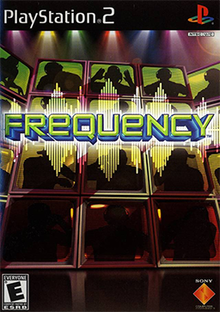Freezepop is an American electronic band from Boston, Massachusetts, United States, formed in 1999 by Liz Enthusiasm, Sean T. Drinkwater, and The Duke of Pannekoeken. Since December 2009, the current lineup includes Enthusiasm, Drinkwater, Robert John "Bananas" Foster, and Christmas Disco-Marie Sagan. The band is named after the frozen snack, and they have described their music as "sweet and cold and fruity and plastic-y".

Amplitude is a 2003 rhythm game developed by Harmonix and published by Sony Computer Entertainment for the PlayStation 2. It is the sequel to Frequency (2001). The game was released in 2003 for North America on March 25 and for Europe on September 26.
Harmonix Music Systems, Inc., doing business as Harmonix, is an American video game developer company based in Boston, Massachusetts. The company was established in May 1995 by Alex Rigopulos and Eran Egozy. Harmonix is perhaps best known as being the developer of music video games series Dance Central and Rock Band, as well as being the original developer and creator of the Guitar Hero series before development moved to Neversoft and Vicarious Visions.
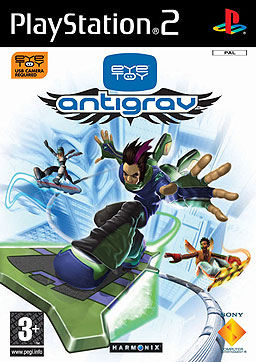
EyeToy: AntiGrav is a hoverboard game by Harmonix, released in November 2004 for the PlayStation 2. It was touted as the first "real" game for EyeToy targeted to more seasoned gamers. The earlier games such as Play and Groove were geared towards younger players for family or party fun. Unlike the earlier EyeToy games, the player's image is not shown inside the Antigrav game. Instead, the player's movement is reflected in the animated character in the game. The player moves their body to guide the on-screen character through a track. Some obstacles require the player to crouch or jump. Up to 4 players are supported. The game was released in the U.S. in November 2004, and in PAL in March 2005.
Kasson Crooker is an American electronic musician, a composer, and the artist behind Symbion Project, his solo moniker. His past bands are Freezepop, Splashdown, Larkspur, and Sirensong. DJ HMX, Komputer Kontroller, and Cosmonaut Zero were alias bands of Crooker used only for the videogames FreQuency and Amplitude.

Madden NFL 2001 is an American football video game. It is the third in the Madden NFL series to include an NFL player, Tennessee Titans running back Eddie George, on its cover. In addition, it is the first game in the series to have a player, instead of John Madden featured prominently on the box art. Madden's picture is shown on a small logo, which would reappear for every following game until Madden NFL 06. It is also the first game in the Madden NFL series to appear on the PlayStation 2 game console. This is the first Madden game to feature NFL Europe teams.
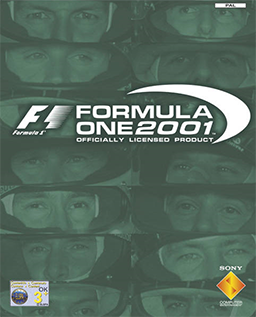
Formula One 2001 is a racing video game developed by Studio 33 for the PlayStation version and Studio Liverpool for the PlayStation 2 version and published by Sony Computer Entertainment Europe in PAL regions for both systems. The PlayStation 2 version was published in North America by Sony Computer Entertainment America under the 989 Sports brand. It is a sequel to the 2000 video game Formula One 2000 and was based on the 2001 Formula One World Championship. This is the last game to be released in North America until Formula One Championship Edition.
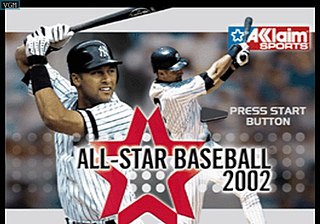
All-Star Baseball 2002 is a baseball sports game released for PlayStation 2 and GameCube in 2001.
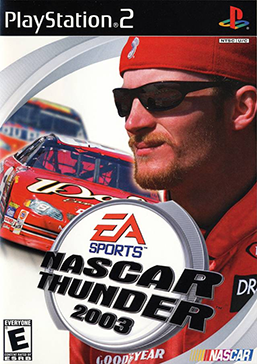
NASCAR Thunder 2003 is the sixth edition of the EA Sports' NASCAR racing simulator series. Developed by EA Tiburon and Budcat Creations and published by EA Sports. It was released for PlayStation, PlayStation 2, GameCube, and Xbox on September 19, 2002, and for Microsoft Windows on October 16. The product features Dale Earnhardt Jr. on the cover. It was the first time the NASCAR's Most Popular Driver Award recipient was featured on the cover, although he did not win the award for the first time until the following year. Dale Earnhardt appeared in the game as a driver as a result of entering his name as a Create-A-Car driver's name; he did not appear in the previous game due to his death. He appeared as a legend in subsequent games.

Guitar Hero is a 2005 rhythm game developed by Harmonix and published by RedOctane for the PlayStation 2. It is the first installment in the Guitar Hero series. Guitar Hero was released in November 2005 in North America, April 2006 in Europe and June 2006 in Australia. The game's development was a result of collaboration between RedOctane and Harmonix to bring a Guitar Freaks-like game to United States.
Robotkid is the alias of Josh Randall, an electronic dance musician, video artist, and video game developer from Cambridge, Massachusetts. Along with PK, he was part of the mid-1990s synthcore band Institute of Technology. He is the former Creative Director at Harmonix Music Systems, the video game studio responsible for the Karaoke Revolution, Guitar Hero, and Rock Band series. Prior to Harmonix, Randall worked for Looking Glass Studios. Like Freezepop, whose Kasson Crooker also works for Harmonix, Robotkid's music has made appearances on the studio's game releases.

International Track & Field 2000 is a track and field game for PlayStation in 1999 and Nintendo 64 in 2000. It was released in Europe under the name International Track & Field: Summer Games on the Nintendo 64 and Game Boy Color, and in Japan as Ganbare! Nippon! Olympics 2000, where it was licensed by the Japanese Olympic Committee. Versions were also released for the Sega Dreamcast, PlayStation 2, and Game Boy Color as ESPN International Track & Field in North America. Maurice Greene (sprinter), a former men's WR holder in the 100M dash, is the cover athlete.

Test Drive: Off-Road: Wide Open is a racing video game developed by Angel Studios and published by Infogrames for PlayStation 2 and Xbox. It is the first game in the Test Drive series to be developed for the sixth generation of gaming systems, and the fourth and final installment of the Off-Road series. Trucks from General Motors make a full return as playable vehicles after being sort of absent in Test Drive: Off-Road 3.

NBA Hoopz is a 2001 basketball video game published by Midway. It is the sequel to NBA Hangtime and NBA Showtime: NBA on NBC. Hoopz was the only 3-on-3, arcade-style basketball video game available during the 2000–01 NBA season. Shaquille O'Neal is featured on the game cover.

TD Overdrive: The Brotherhood of Speed is a racing video game developed by Pitbull Syndicate and published by Infogrames for PlayStation 2, Xbox and Microsoft Windows.

Phase is a music-themed iPod game created by Harmonix exclusively for the iPod click wheel interface. It is similar to other Harmonix games Amplitude and FreQuency.
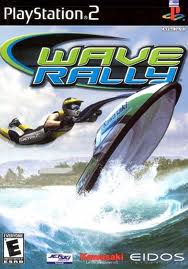
Wave Rally, also known as Jet Ski Riders, is a 2001 Jet Ski racing game developed by Opus Studio and published by Eidos Interactive exclusively for the PlayStation 2. It was also to be released on the Xbox but was canceled.

F1 2001 is a racing video game developed by Image Space Incorporated for the Microsoft Windows version and EA UK for the PlayStation 2 and Xbox version and published by EA Sports for Microsoft Windows, PlayStation 2 and Xbox. It is based on the 2001 Formula One season. A port for GameCube was planned, but cancelled for unknown reasons, and eventually released with minor changes as F1 2002. A Game Boy Color version was also cancelled during development.
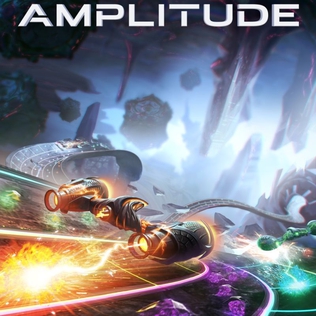
Amplitude is a 2016 music video game developed and published by Harmonix. As the reboot of Amplitude (2003), the game was released in 2016 for PlayStation 4 in January and for PlayStation 3 in April. The game received generally average reviews upon release.

FIFA 2001 is a football simulation video game and the sequel to FIFA 2000. It was succeeded by FIFA Football 2002. It features Paul Scholes on the UK cover and Ben Olsen on the North American cover. The game's Spanish cover features Gaizka Mendieta on it. It was released on 31 October 2000 for Microsoft Windows and PlayStation, and on 24 November 2000 for PlayStation 2 as a launch title in Europe. The PlayStation 2 version was originally slated for release in the U.S. on 7 November, before it was delayed to 28 November. A Game Boy Color version was planned but cancelled.
